
dora
DORA (Dataflow-Oriented Robotic Architecture) is middleware designed to streamline and simplify the creation of AI-based robotic applications. It offers low latency, composable, and distributed dataflow capabilities. Applications are modeled as directed graphs, also referred to as pipelines.
Stars: 2565
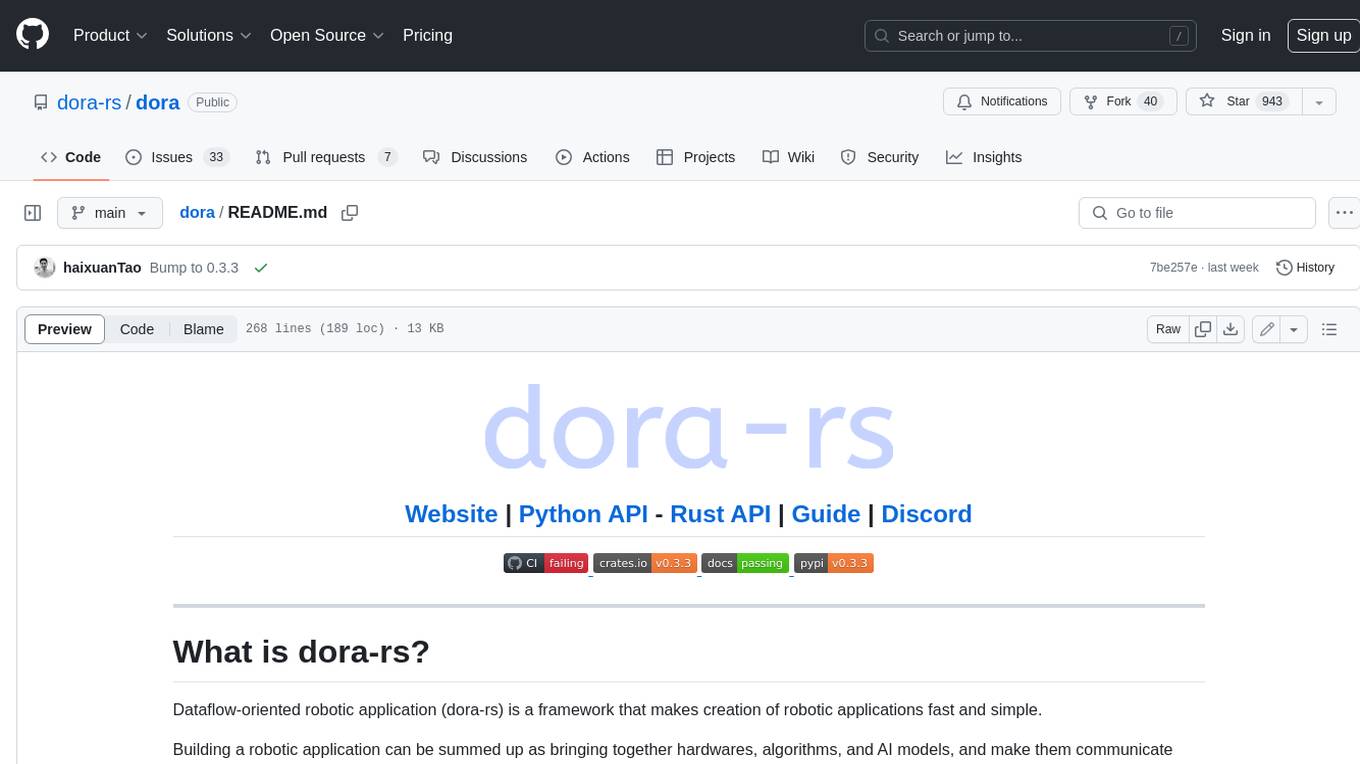
Dataflow-oriented robotic application (dora-rs) is a framework that makes creation of robotic applications fast and simple. Building a robotic application can be summed up as bringing together hardwares, algorithms, and AI models, and make them communicate with each others. At dora-rs, we try to: make integration of hardware and software easy by supporting Python, C, C++, and also ROS2. make communication low latency by using zero-copy Arrow messages. dora-rs is still experimental and you might experience bugs, but we're working very hard to make it stable as possible.
README:
Website | Python API | Rust API | Guide | Discord
- 🚀 dora-rs is a framework to run realtime multi-AI and multi-hardware applications.
- 🦀 dora-rs internals are 100% Rust making it extremely fast compared to alternative such as being ⚡️ 10-17x faster than
ros2. - ❇️ Includes a large set of pre-packaged nodes for fast prototyping which simplifies integration of hardware, algorithms, and AI models.
Latency benchmark with Python API for both framework, sending 40M of random bytes.
2025
- [08/25] Introduced
dora.builder, a new Pythonic API for imperatively definingdoradataflows. - [07/25] Added Kornia rust nodes in the hub for V4L / Gstreamer cameras and Sobel image processing.
- [06/25] Add support for git based node, dora-vggt for multi-camera depth estimation, and adding robot_descriptions_py as a default way to get urdfs within dora.
- [05/25] Add support for dora-pytorch-kinematics for fk and ik, dora-mediapipe for pose estimation, dora-rustypot for rust serialport read/write, points2d and points3d visualization in rerun.
- [04/25] Add support for dora-cotracker to track any point on a frame, dora-rav1e AV1 encoding up to 12bit and dora-dav1d AV1 decoding,
- [03/25] Add support for dora async Python.
- [03/25] Add support for Microsoft Phi4, Microsoft Magma.
- [03/25] dora-rs has been accepted to GSoC 2025 🎉, with the following idea list.
- [03/25] Add support for Zenoh for distributed dataflow.
- [03/25] Add support for Meta SAM2, Kokoro(TTS), Improved Qwen2.5 Performance using
llama.cpp. - [02/25] Add support for Qwen2.5(LLM), Qwen2.5-VL(VLM), outetts(TTS)
| dora-rs | |
|---|---|
| APIs | Python >= 3.7 including sync ⭐✅ Rust ✅ C/C++ 🆗 ROS2 >= Foxy 🆗 |
| OS | Linux: Arm 32 ⭐✅ Arm 64 ⭐✅ x64_86 ⭐✅ MacOS: Arm 64 ⭐✅ Windows: x64_86 🆗 WSL: x64_86 🆗 Android: 🛠️ (Blocked by: https://github.com/elast0ny/shared_memory/issues/32) IOS: 🛠️ |
| Message Format | Arrow ✅ Standard Specification 🛠️ |
| Local Communication | Shared Memory ✅ Cuda IPC 📐 |
| Remote Communication | Zenoh 📐 |
| Metrics, Tracing, and Logging | Opentelemetry 📐 |
| Configuration | YAML ✅ |
| Package Manager |
pip: Python Node ✅ Rust Node ✅ C/C++ Node 🛠️ cargo: Rust Node ✅ |
- ⭐ = Recommended
- ✅ = First Class Support
- 🆗 = Best Effort Support
- 📐 = Experimental and looking for contributions
- 🛠️ = Unsupported but hoped for through contributions
Everything is open for contributions 🙋
The node hub is available in the dora-rs/node-hub repository.
| Type | Title | Description | Last Commit |
|---|---|---|---|
| Vision | YOLO | Use YOLO to detect object within image. |  |
| ROS2 | C++ ROS2 Example | Example using C++ ROS2 |  |
| ROS2 | Rust ROS2 Example | Example using Rust ROS2 |  |
| ROS2 | Python ROS2 Example | Example using Python ROS2 |  |
| Benchmark | GPU Benchmark | GPU Benchmark of dora-rs |  |
| Benchmark | CPU Benchmark | CPU Benchmark of dora-rs |  |
| Tutorial | Rust Example | Example using Rust |  |
| Tutorial | Python Example | Example using Python |  |
| Tutorial | CMake Example | Example using CMake |  |
| Tutorial | C Example | Example with C node |  |
| Tutorial | CUDA Example | Example using CUDA Zero Copy |  |
| Tutorial | C++ Example | Example with C++ node |  |
| Tutorial | Python Dataflow Builder Examples | Examples using the new Pythonic API. |  |
=
pip install dora-rs-cliAdditional installation methods
Install dora with our standalone installers, or from crates.io:
cargo install dora-clicurl --proto '=https' --tlsv1.2 -LsSf https://github.com/dora-rs/dora/releases/latest/download/dora-cli-installer.sh | shpowershell -ExecutionPolicy ByPass -c "irm https://github.com/dora-rs/dorareleases/latest/download/dora-cli-installer.ps1 | iex"git clone https://github.com/dora-rs/dora.git
cd dora
cargo build --release -p dora-cli
PATH=$PATH:$(pwd)/target/release- Run the yolo python example:
## Create a virtual environment
uv venv --seed -p 3.11
## Install nodes dependencies of a remote graph
dora build https://raw.githubusercontent.com/dora-rs/dora/refs/heads/main/examples/object-detection/yolo.yml --uv
## Run yolo graph
dora run yolo.yml --uvMake sure to have a webcam
To stop your dataflow, you can use ctrl+c
- To understand what is happening, you can look at the dataflow with:
cat yolo.yml- Resulting in:
nodes:
- id: camera
build: pip install opencv-video-capture
path: opencv-video-capture
inputs:
tick: dora/timer/millis/20
outputs:
- image
env:
CAPTURE_PATH: 0
IMAGE_WIDTH: 640
IMAGE_HEIGHT: 480
- id: object-detection
build: pip install dora-yolo
path: dora-yolo
inputs:
image: camera/image
outputs:
- bbox
- id: plot
build: pip install dora-rerun
path: dora-rerun
inputs:
image: camera/image
boxes2d: object-detection/bbox- In the above example, we can understand that the camera is sending image to both the rerun viewer as well as a yolo model that generates bounding box that is visualized within rerun.
The full documentation is available on our website. A lot of guides are available on this section of our website.
Dataflow-Oriented Robotic Architecture (dora-rs) is a framework that makes creation of robotic applications fast and simple.
dora-rs implements a declarative dataflow paradigm where tasks are split between nodes isolated as individual processes.
The dataflow paradigm has the advantage of creating an abstraction layer that makes robotic applications modular and easily configurable.
Communication between nodes is handled with shared memory on a same machine and TCP on distributed machines. Our shared memory implementation tracks messages across processes and discards them when obsolete. Shared memory slots are cached to avoid new memory allocation.
Nodes communicate with Apache Arrow Data Format.
Apache Arrow is a universal memory format for flat and hierarchical data. The Arrow memory format supports zero-copy reads for lightning-fast data access without serialization overhead. It defines a C data interface without any build-time or link-time dependency requirement, that means that dora-rs has no compilation step beyond the native compiler of your favourite language.
dora-rs uses Opentelemetry to record all your logs, metrics and traces. This means that the data and telemetry can be linked using a shared abstraction.
Opentelemetry is an open source observability standard that makes dora-rs telemetry collectable by most backends such as elasticsearch, prometheus, Datadog...
Opentelemetry is language independent, backend agnostic, and easily collect distributed data, making it perfect for dora-rs applications.
Note: this feature is marked as unstable.
- Compilation Free Message passing to ROS 2
- Automatic conversion ROS 2 Message <-> Arrow Array
import pyarrow as pa
# Configuration Boilerplate...
turtle_twist_writer = ...
## Arrow Based ROS2 Twist Message
## which does not require ROS2 import
message = pa.array([{
"linear": {
"x": 1,
},
"angular": {
"z": 1
},
}])
turtle_twist_writer.publish(message)You might want to use ChatGPT to write the Arrow Formatting: https://chat.openai.com/share/4eec1c6d-dbd2-46dc-b6cd-310d2895ba15
We are passionate about supporting contributors of all levels of experience and would love to see you get involved in the project. See the contributing guide to get started.
Our main communication channels are:
Feel free to reach out on any topic, issues or ideas.
We also have a contributing guide.
This project is licensed under Apache-2.0. Check out NOTICE.md for more information.
For Tasks:
Click tags to check more tools for each tasksFor Jobs:
Alternative AI tools for dora
Similar Open Source Tools

dora
Dataflow-oriented robotic application (dora-rs) is a framework that makes creation of robotic applications fast and simple. Building a robotic application can be summed up as bringing together hardwares, algorithms, and AI models, and make them communicate with each others. At dora-rs, we try to: make integration of hardware and software easy by supporting Python, C, C++, and also ROS2. make communication low latency by using zero-copy Arrow messages. dora-rs is still experimental and you might experience bugs, but we're working very hard to make it stable as possible.
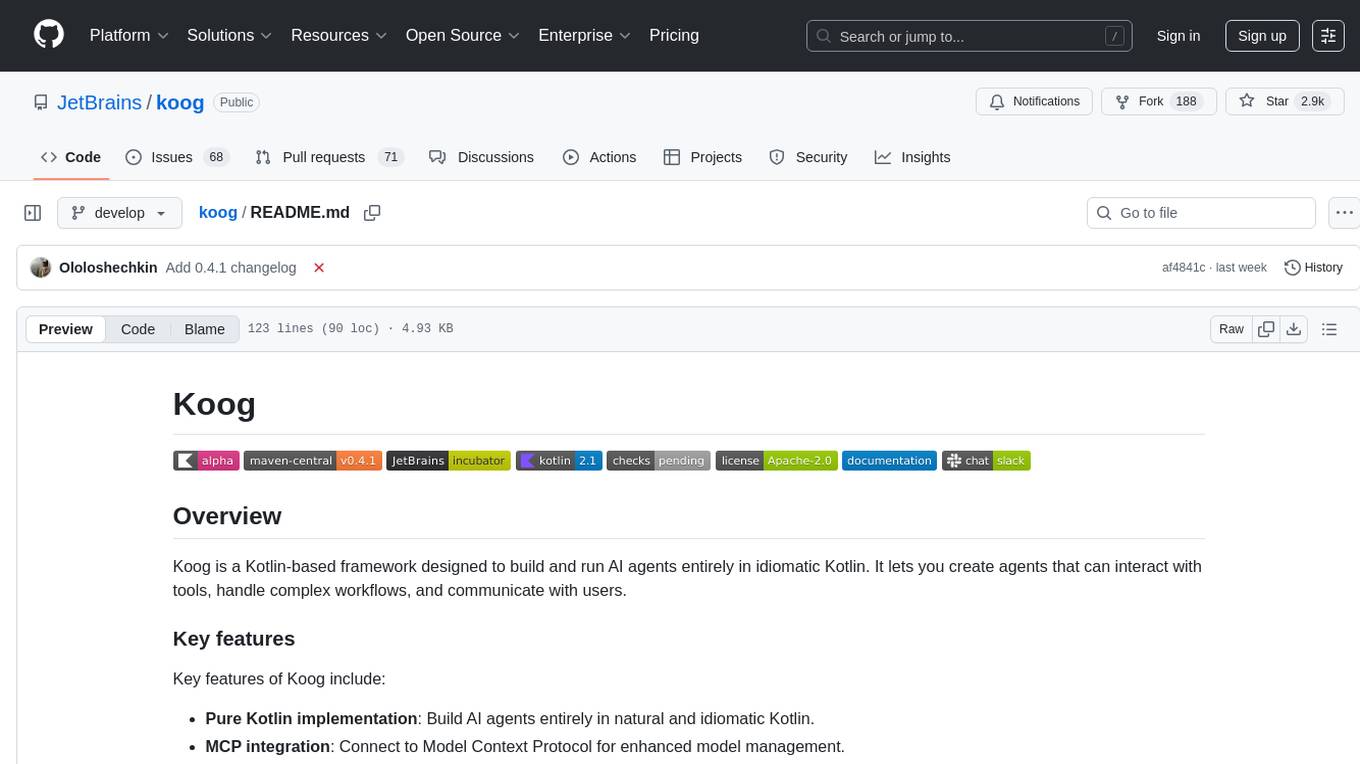
koog
Koog is a Kotlin-based framework for building and running AI agents entirely in idiomatic Kotlin. It allows users to create agents that interact with tools, handle complex workflows, and communicate with users. Key features include pure Kotlin implementation, MCP integration, embedding capabilities, custom tool creation, ready-to-use components, intelligent history compression, powerful streaming API, persistent agent memory, comprehensive tracing, flexible graph workflows, modular feature system, scalable architecture, and multiplatform support.
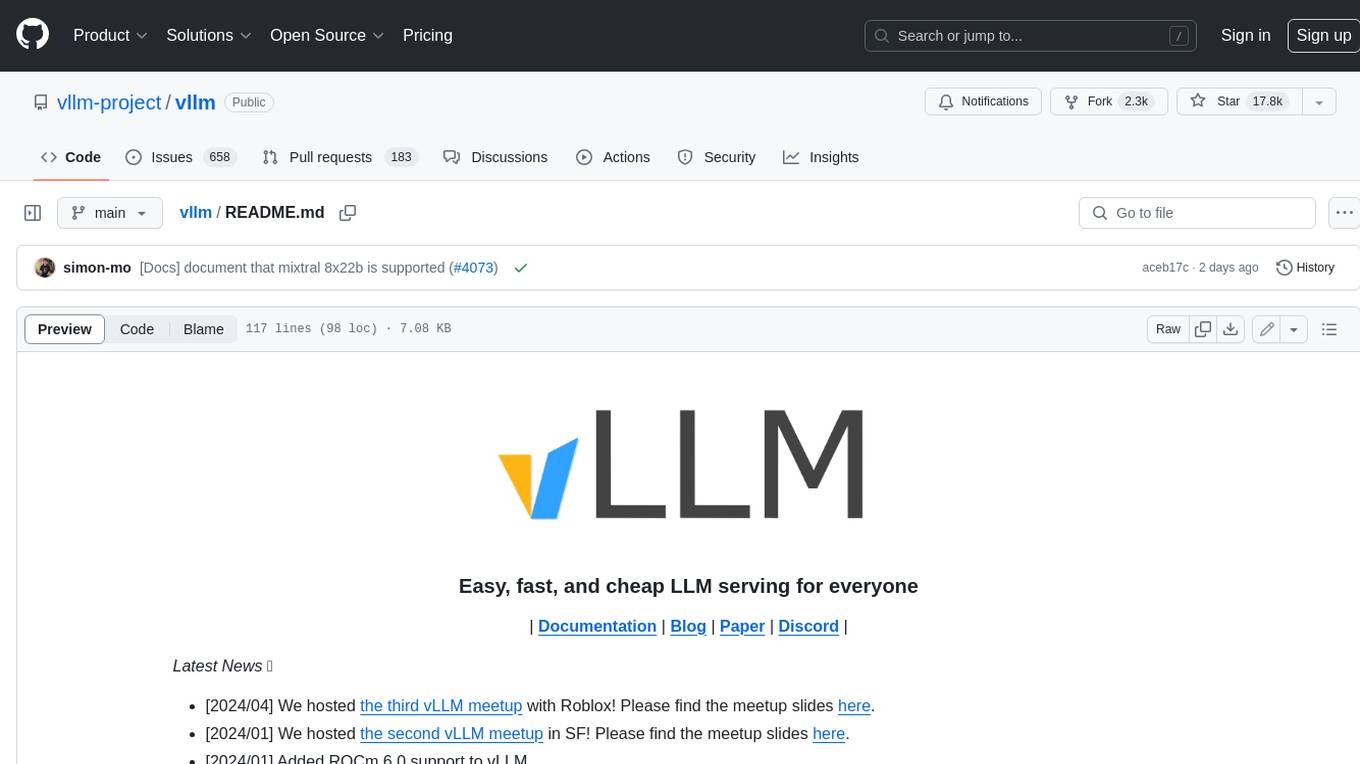
vllm
vLLM is a fast and easy-to-use library for LLM inference and serving. It is designed to be efficient, flexible, and easy to use. vLLM can be used to serve a variety of LLM models, including Hugging Face models. It supports a variety of decoding algorithms, including parallel sampling, beam search, and more. vLLM also supports tensor parallelism for distributed inference and streaming outputs. It is open-source and available on GitHub.
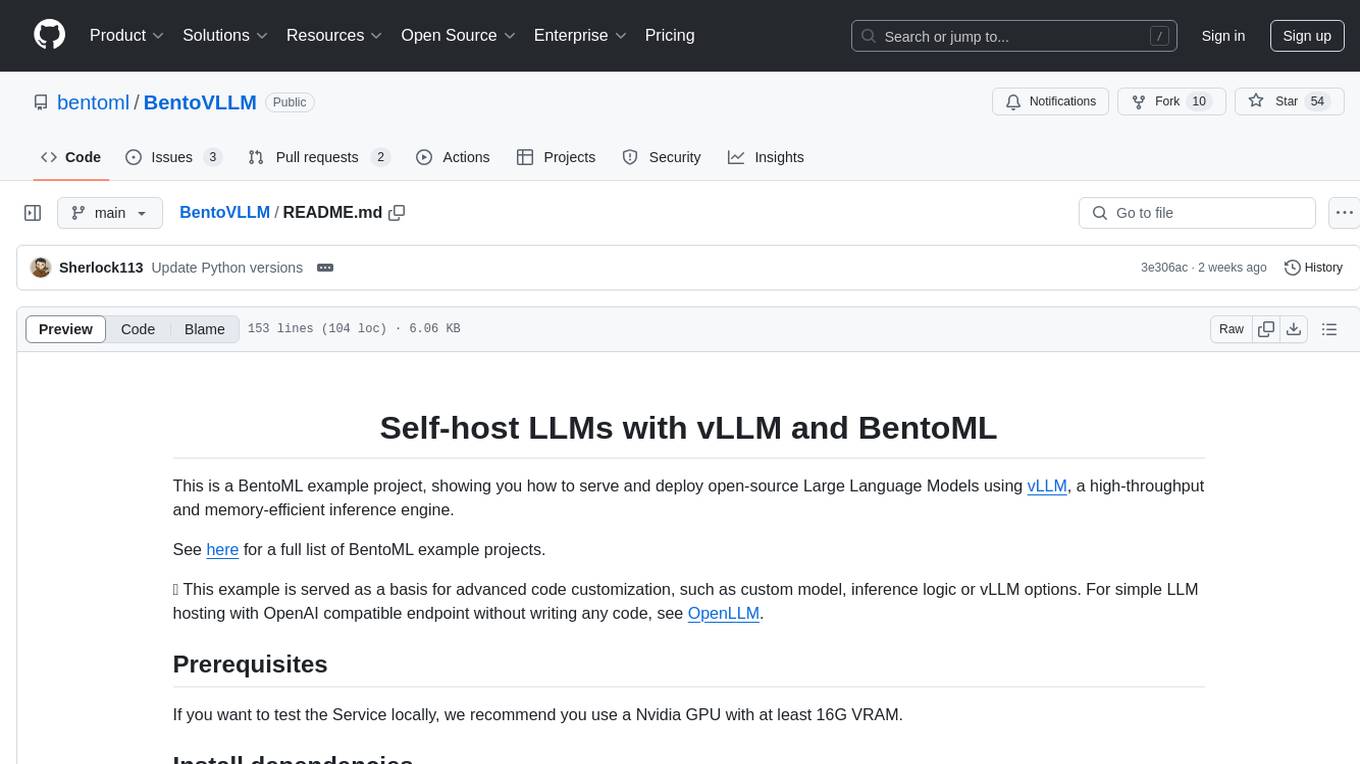
BentoVLLM
BentoVLLM is an example project demonstrating how to serve and deploy open-source Large Language Models using vLLM, a high-throughput and memory-efficient inference engine. It provides a basis for advanced code customization, such as custom models, inference logic, or vLLM options. The project allows for simple LLM hosting with OpenAI compatible endpoints without the need to write any code. Users can interact with the server using Swagger UI or other methods, and the service can be deployed to BentoCloud for better management and scalability. Additionally, the repository includes integration examples for different LLM models and tools.
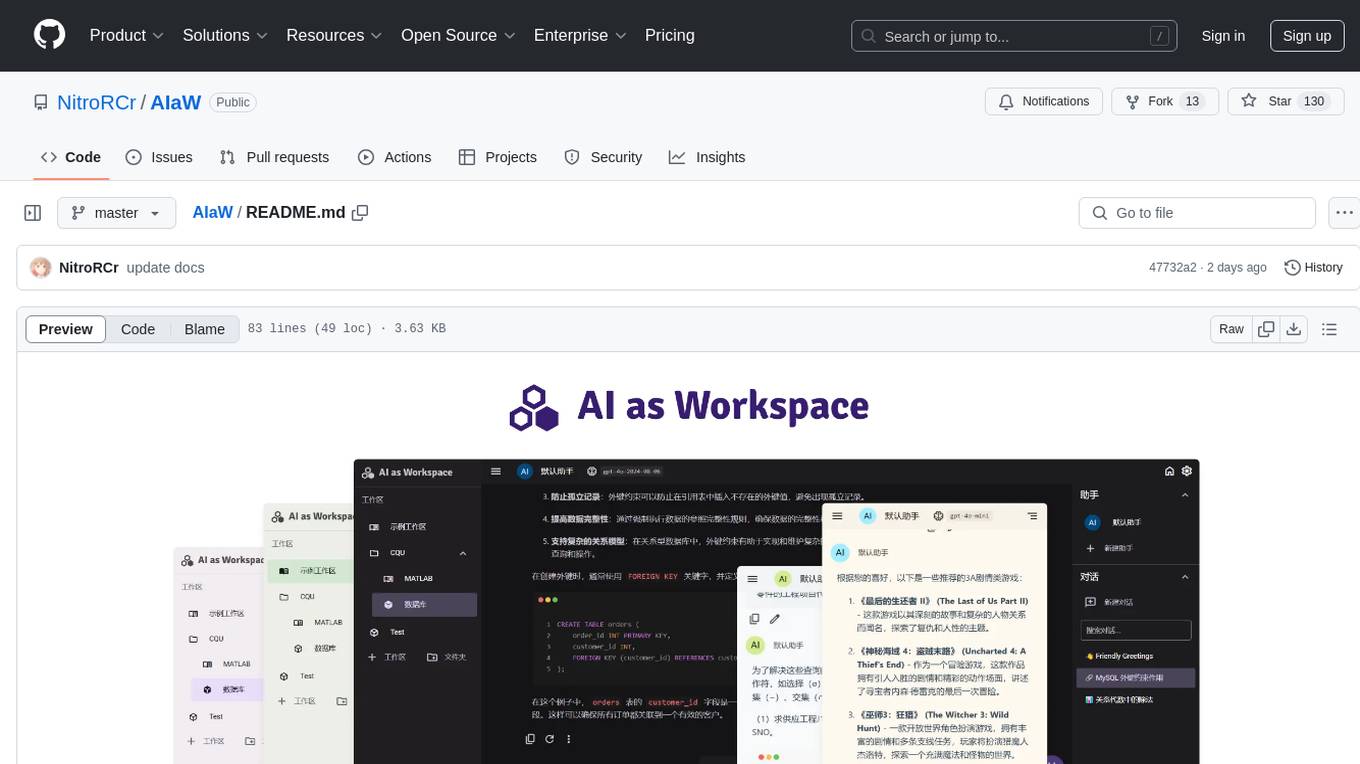
AIaW
AIaW is a next-generation LLM client with full functionality, lightweight, and extensible. It supports various basic functions such as streaming transfer, image uploading, and latex formulas. The tool is cross-platform with a responsive interface design. It supports multiple service providers like OpenAI, Anthropic, and Google. Users can modify questions, regenerate in a forked manner, and visualize conversations in a tree structure. Additionally, it offers features like file parsing, video parsing, plugin system, assistant market, local storage with real-time cloud sync, and customizable interface themes. Users can create multiple workspaces, use dynamic prompt word variables, extend plugins, and benefit from detailed design elements like real-time content preview, optimized code pasting, and support for various file types.
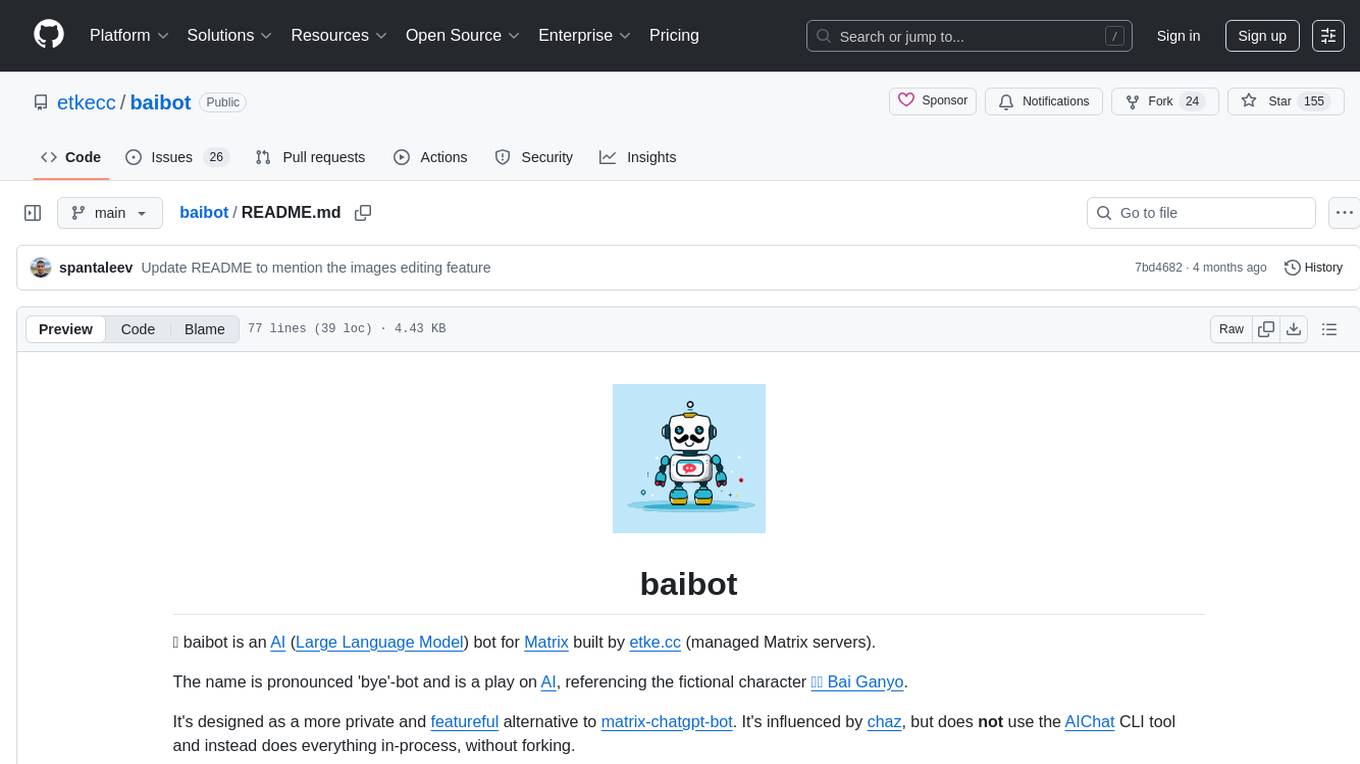
baibot
Baibot is a versatile chatbot framework designed to simplify the process of creating and deploying chatbots. It provides a user-friendly interface for building custom chatbots with various functionalities such as natural language processing, conversation flow management, and integration with external APIs. Baibot is highly customizable and can be easily extended to suit different use cases and industries. With Baibot, developers can quickly create intelligent chatbots that can interact with users in a seamless and engaging manner, enhancing user experience and automating customer support processes.
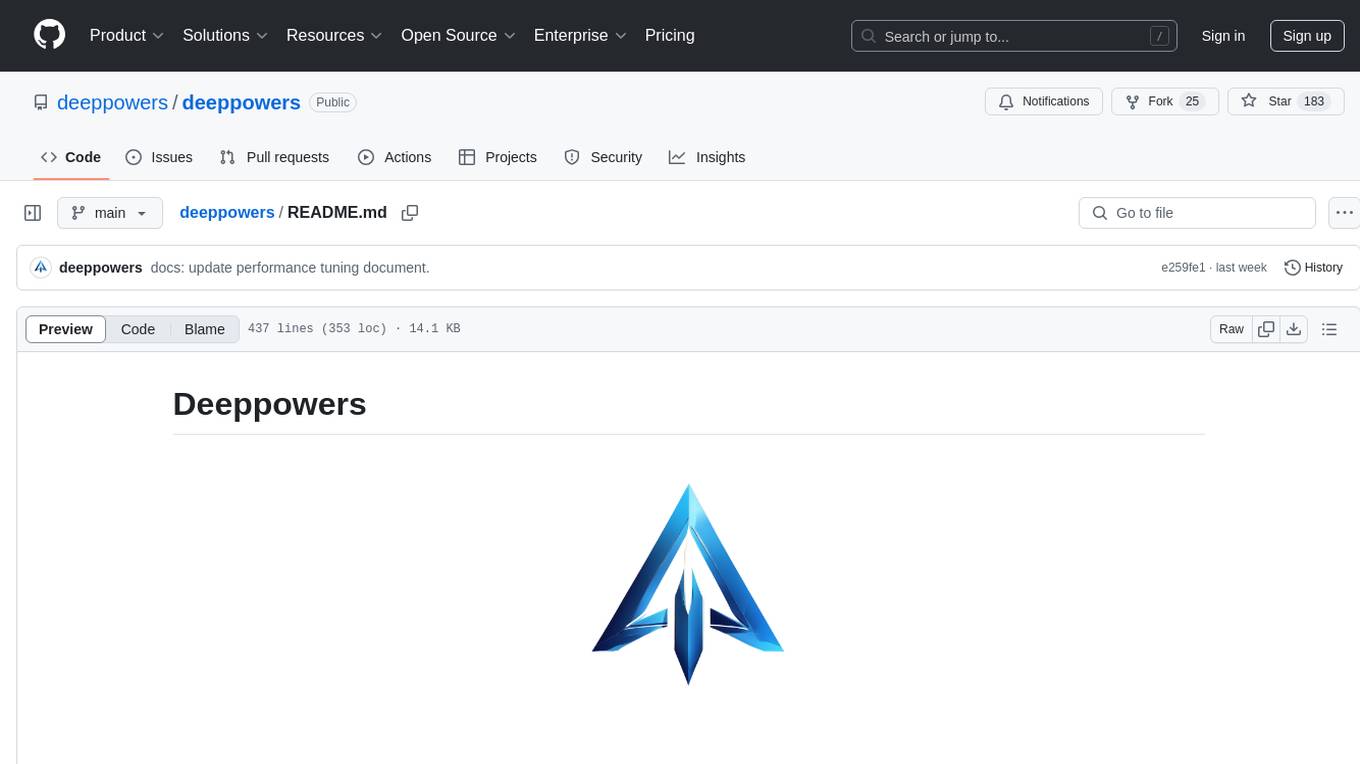
deeppowers
Deeppowers is a powerful Python library for deep learning applications. It provides a wide range of tools and utilities to simplify the process of building and training deep neural networks. With Deeppowers, users can easily create complex neural network architectures, perform efficient training and optimization, and deploy models for various tasks. The library is designed to be user-friendly and flexible, making it suitable for both beginners and experienced deep learning practitioners.
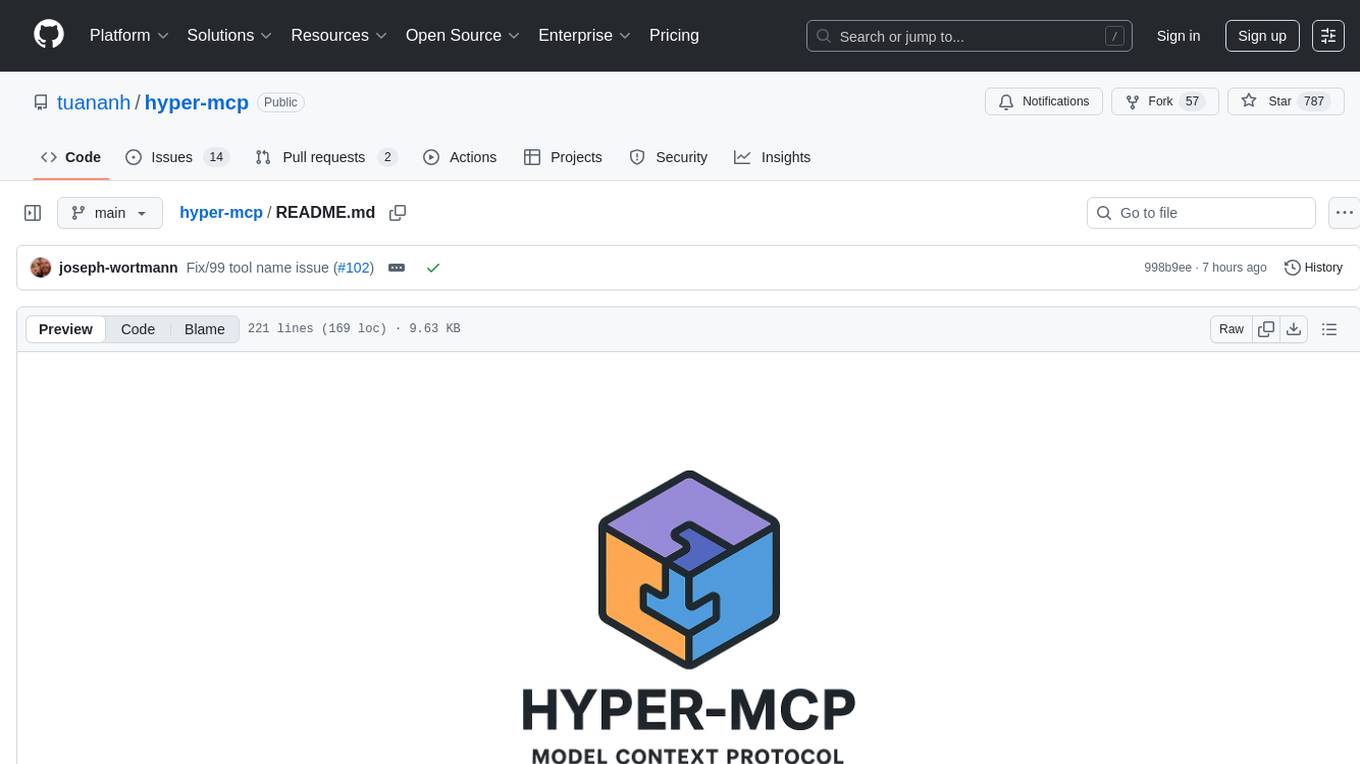
hyper-mcp
hyper-mcp is a fast and secure MCP server that enables adding AI capabilities to applications through WebAssembly plugins. It supports writing plugins in various languages, distributing them via standard OCI registries, and running them in resource-constrained environments. The tool offers sandboxing with WASM for limiting access, cross-platform compatibility, and deployment flexibility. Security features include sandboxed plugins, memory-safe execution, secure plugin distribution, and fine-grained access control. Users can configure the tool for global or project-specific use, start the server with different transport options, and utilize available plugins for tasks like time calculations, QR code generation, hash generation, IP retrieval, and webpage fetching.
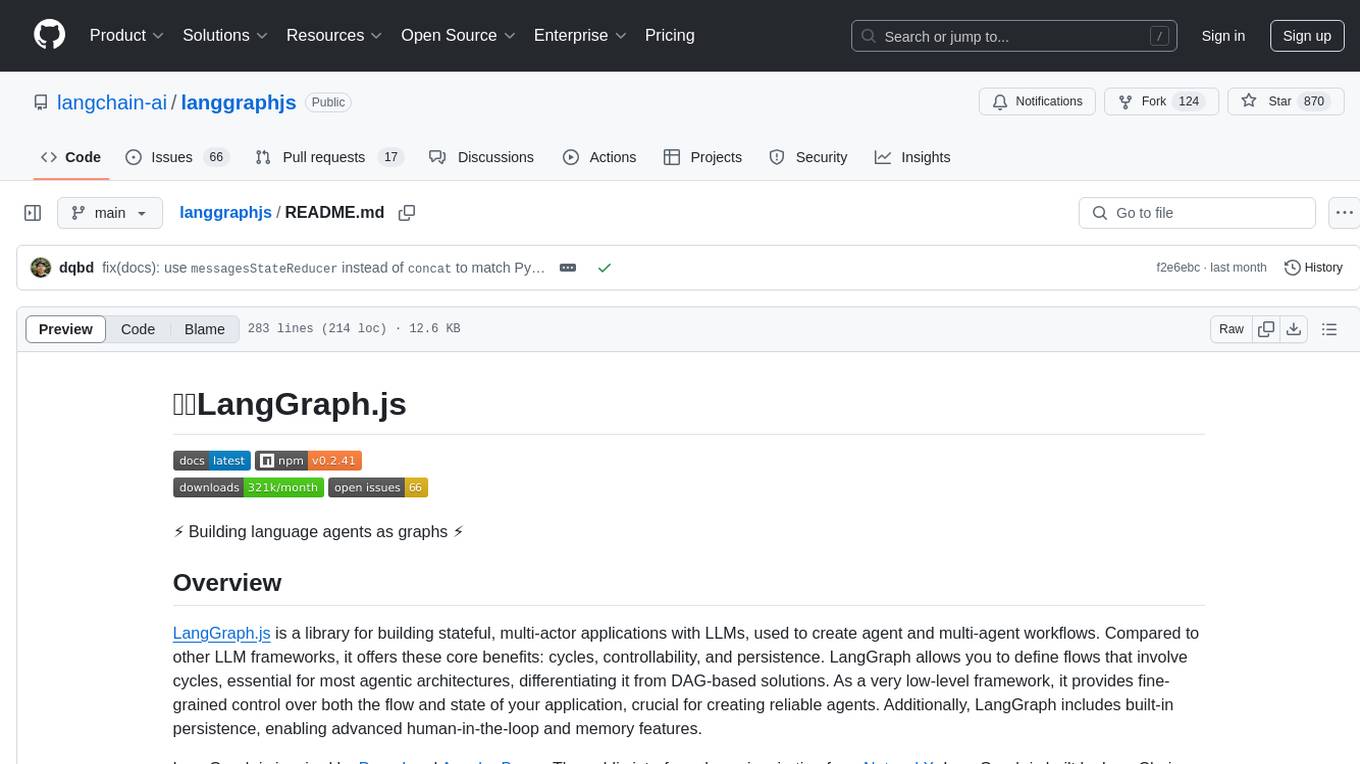
langgraphjs
LangGraph.js is a library for building stateful, multi-actor applications with LLMs, offering benefits such as cycles, controllability, and persistence. It allows defining flows involving cycles, providing fine-grained control over application flow and state. Inspired by Pregel and Apache Beam, it includes features like loops, persistence, human-in-the-loop workflows, and streaming support. LangGraph integrates seamlessly with LangChain.js and LangSmith but can be used independently.
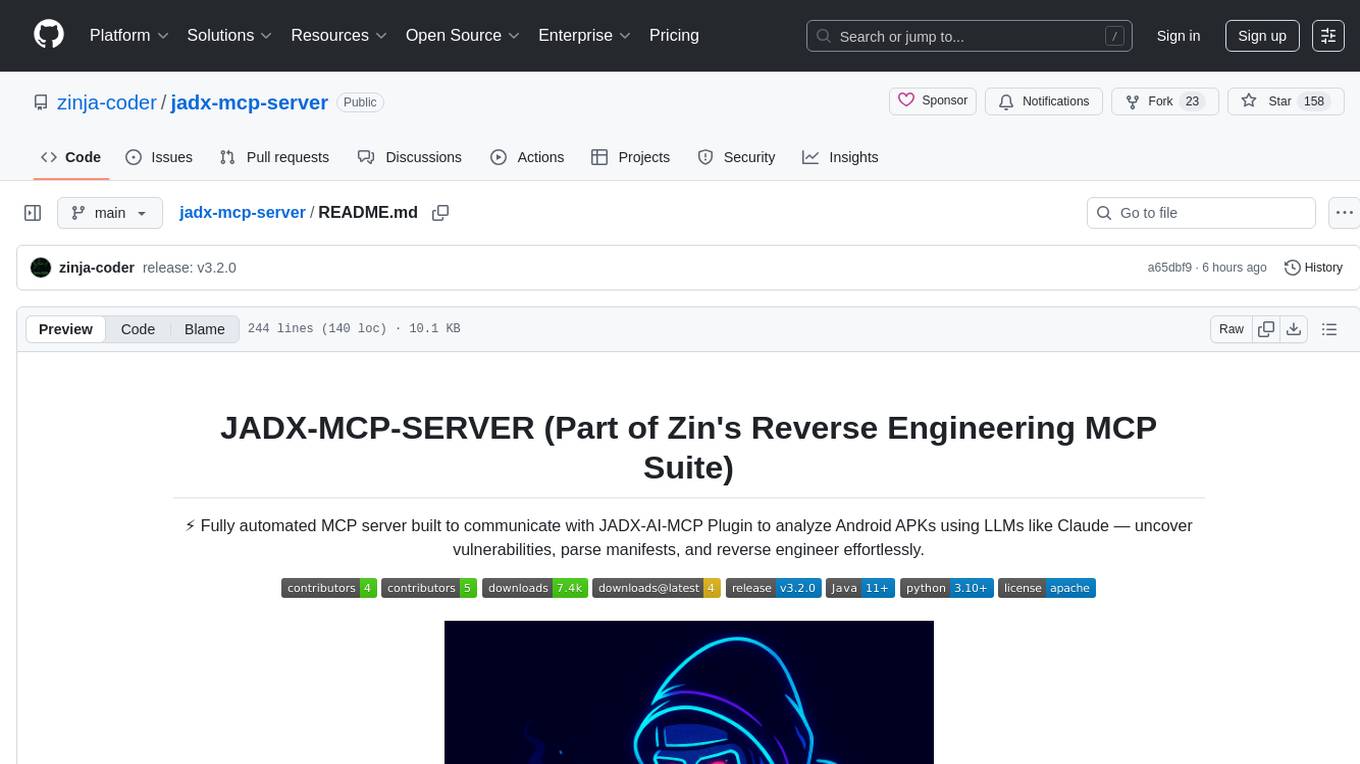
jadx-mcp-server
JADX-MCP-SERVER is a standalone Python server that interacts with JADX-AI-MCP Plugin to analyze Android APKs using LLMs like Claude. It enables live communication with decompiled Android app context, uncovering vulnerabilities, parsing manifests, and facilitating reverse engineering effortlessly. The tool combines JADX-AI-MCP and JADX MCP SERVER to provide real-time reverse engineering support with LLMs, offering features like quick analysis, vulnerability detection, AI code modification, static analysis, and reverse engineering helpers. It supports various MCP tools for fetching class information, text, methods, fields, smali code, AndroidManifest.xml content, strings.xml file, resource files, and more. Tested on Claude Desktop, it aims to support other LLMs in the future, enhancing Android reverse engineering and APK modification tools connectivity for easier reverse engineering purely from vibes.
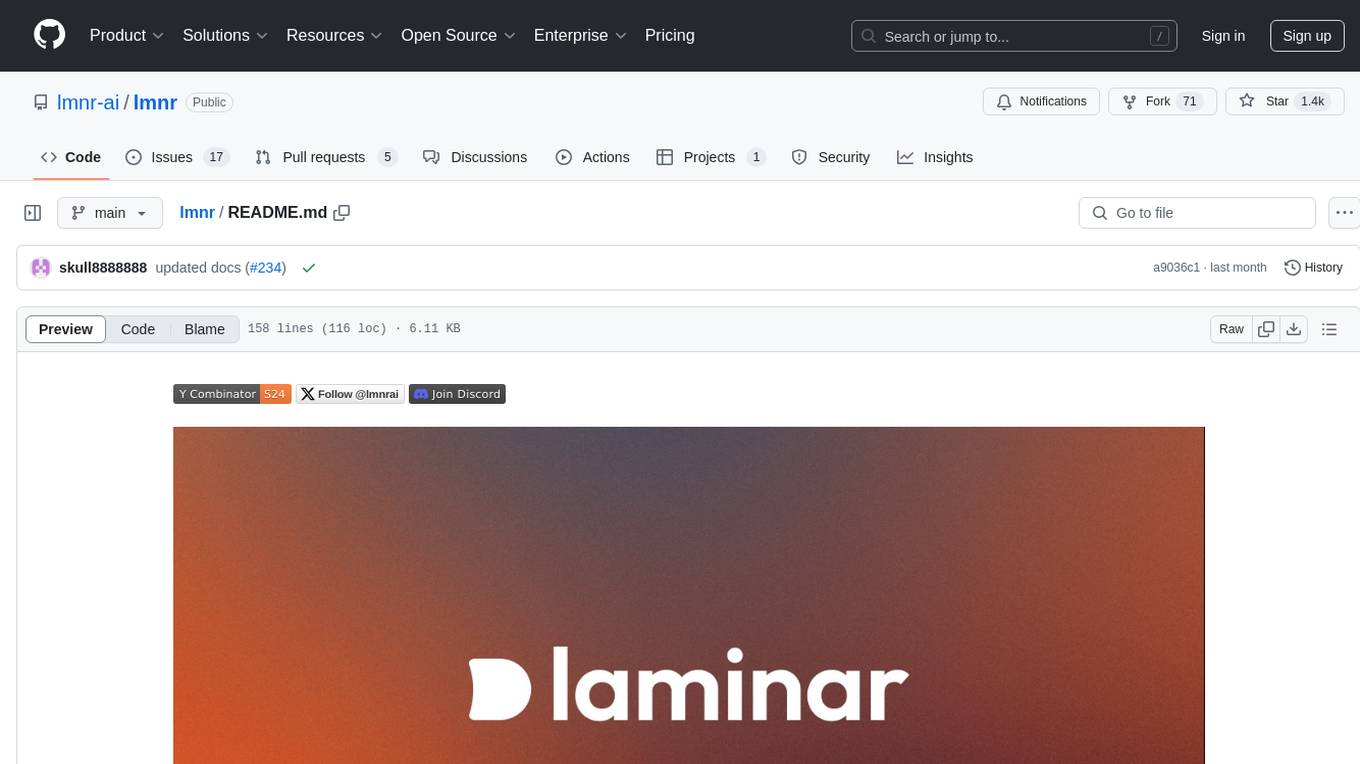
lmnr
Laminar is an all-in-one open-source platform designed for engineering AI products. It allows users to trace, evaluate, label, and analyze LLM data efficiently. The platform offers features such as automatic tracing of common AI frameworks and SDKs, local and online evaluations, simple UI for data labeling, dataset management, and scalability with gRPC communication. Laminar is built with a modern open-source stack including RabbitMQ, Postgres, Clickhouse, and Qdrant for semantic similarity search. It provides fast and beautiful dashboards for traces, evaluations, and labels, making it a comprehensive tool for AI product development.
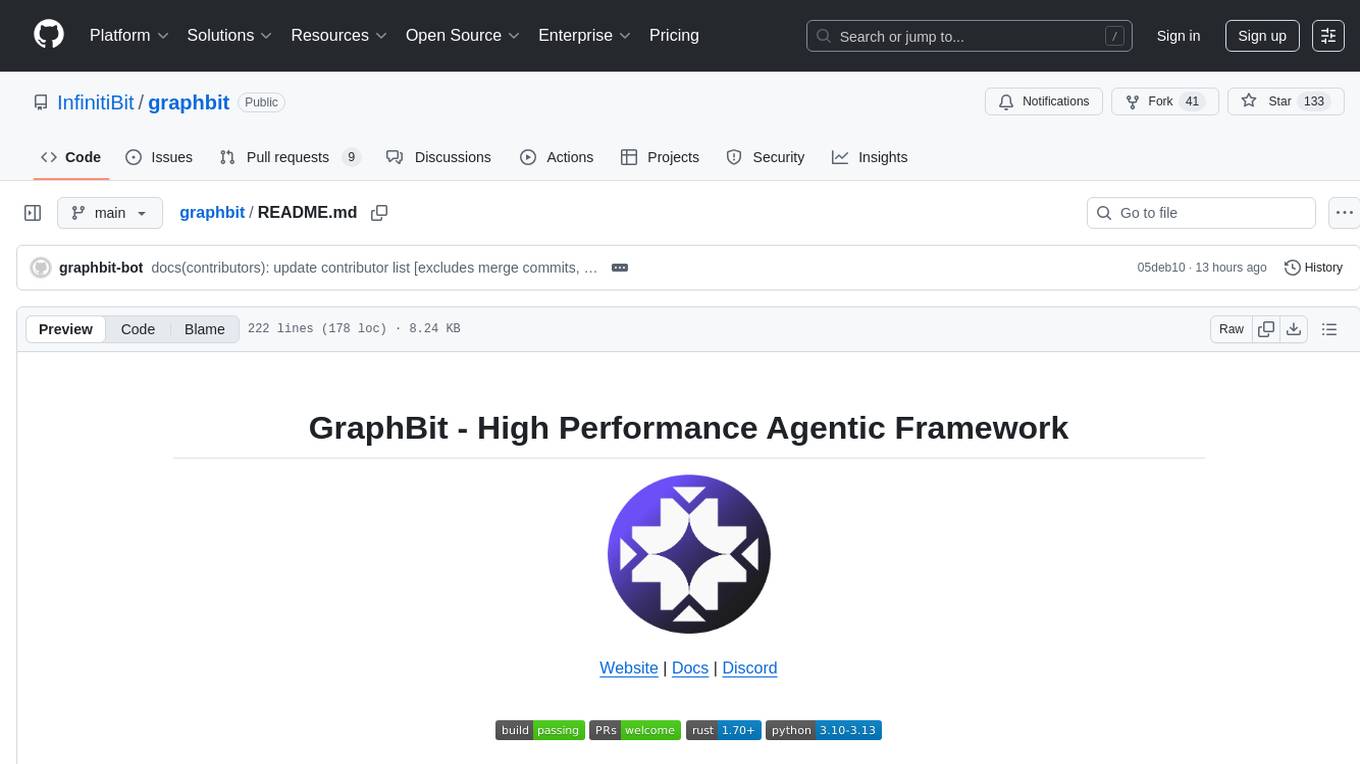
graphbit
GraphBit is an industry-grade agentic AI framework built for developers and AI teams that demand stability, scalability, and low resource usage. It is written in Rust for maximum performance and safety, delivering significantly lower CPU usage and memory footprint compared to leading alternatives. The framework is designed to run multi-agent workflows in parallel, persist memory across steps, recover from failures, and ensure 100% task success under load. With lightweight architecture, observability, and concurrency support, GraphBit is suitable for deployment in high-scale enterprise environments and low-resource edge scenarios.
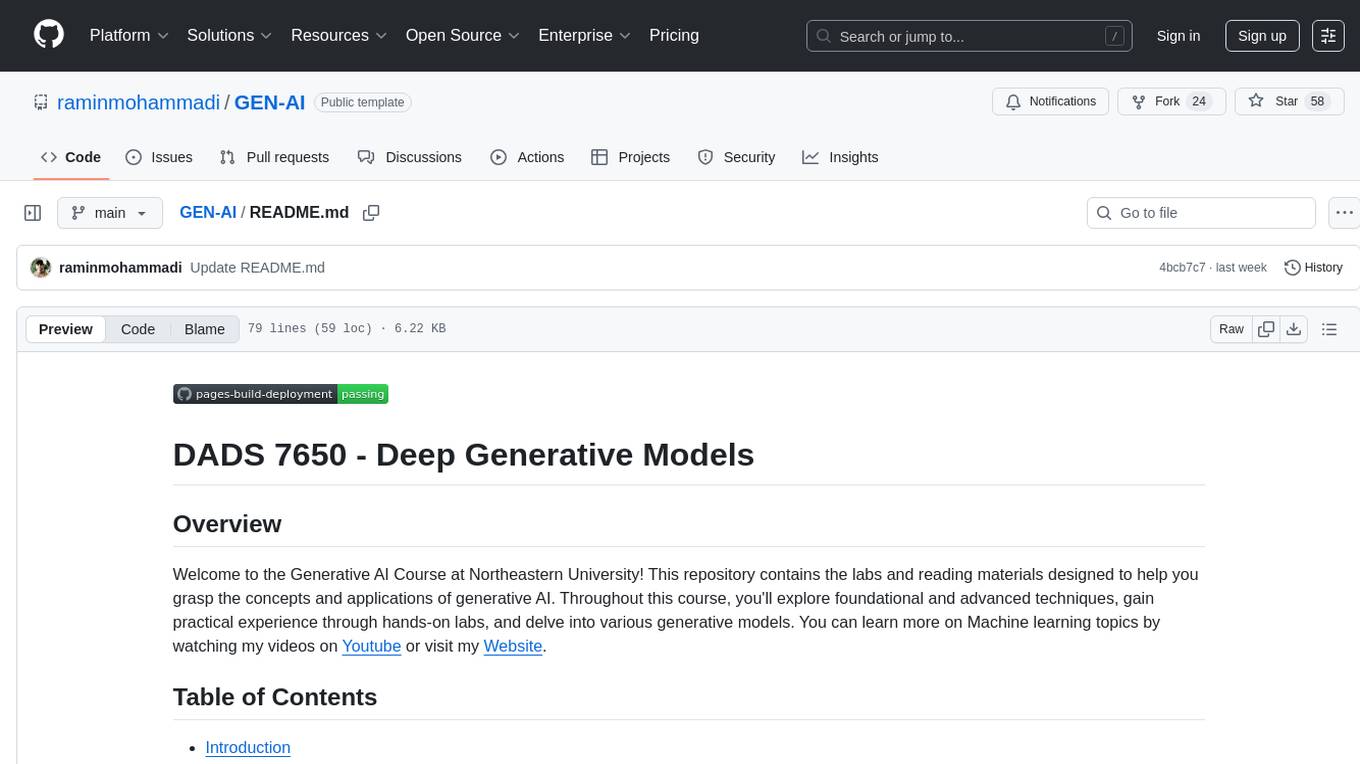
GEN-AI
GEN-AI is a versatile Python library for implementing various artificial intelligence algorithms and models. It provides a wide range of tools and functionalities to support machine learning, deep learning, natural language processing, computer vision, and reinforcement learning tasks. With GEN-AI, users can easily build, train, and deploy AI models for diverse applications such as image recognition, text classification, sentiment analysis, object detection, and game playing. The library is designed to be user-friendly, efficient, and scalable, making it suitable for both beginners and experienced AI practitioners.
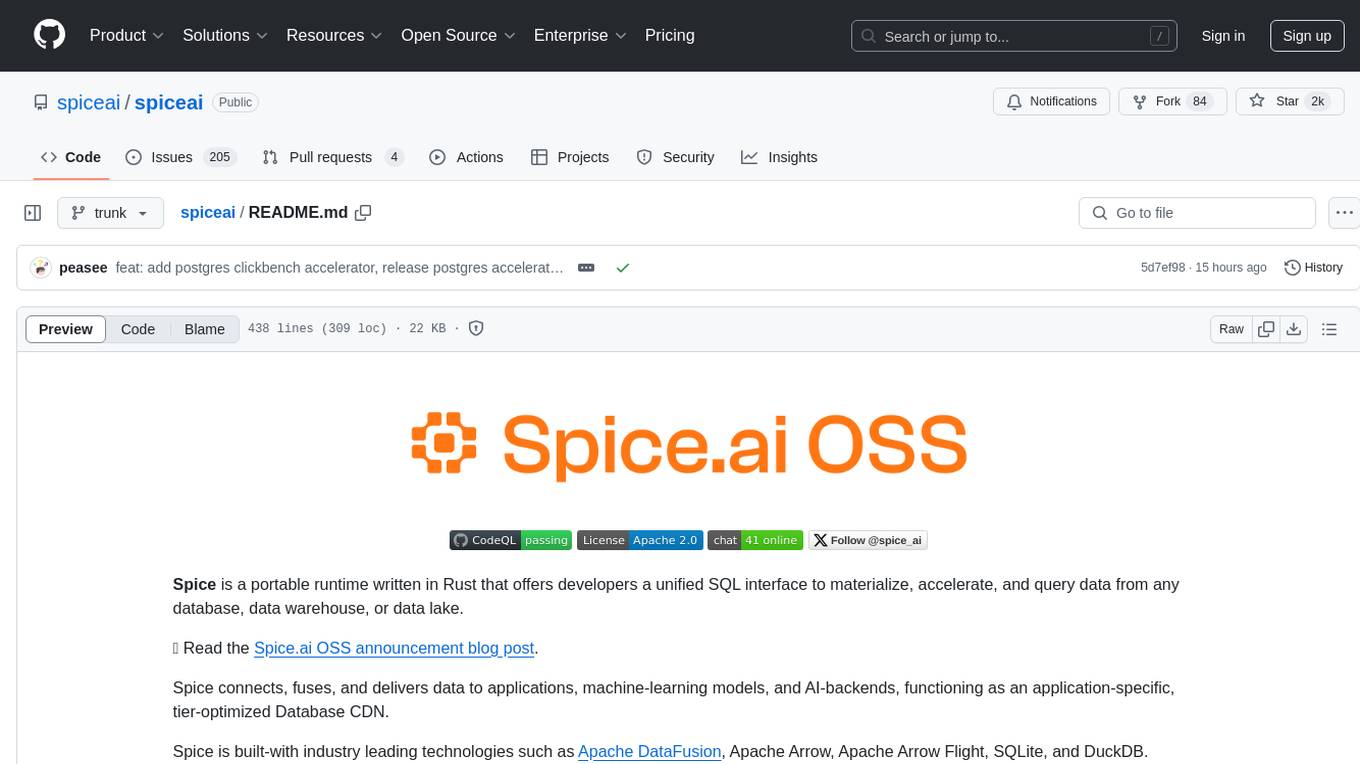
spiceai
Spice is a portable runtime written in Rust that offers developers a unified SQL interface to materialize, accelerate, and query data from any database, data warehouse, or data lake. It connects, fuses, and delivers data to applications, machine-learning models, and AI-backends, functioning as an application-specific, tier-optimized Database CDN. Built with industry-leading technologies such as Apache DataFusion, Apache Arrow, Apache Arrow Flight, SQLite, and DuckDB. Spice makes it fast and easy to query data from one or more sources using SQL, co-locating a managed dataset with applications or machine learning models, and accelerating it with Arrow in-memory, SQLite/DuckDB, or attached PostgreSQL for fast, high-concurrency, low-latency queries.
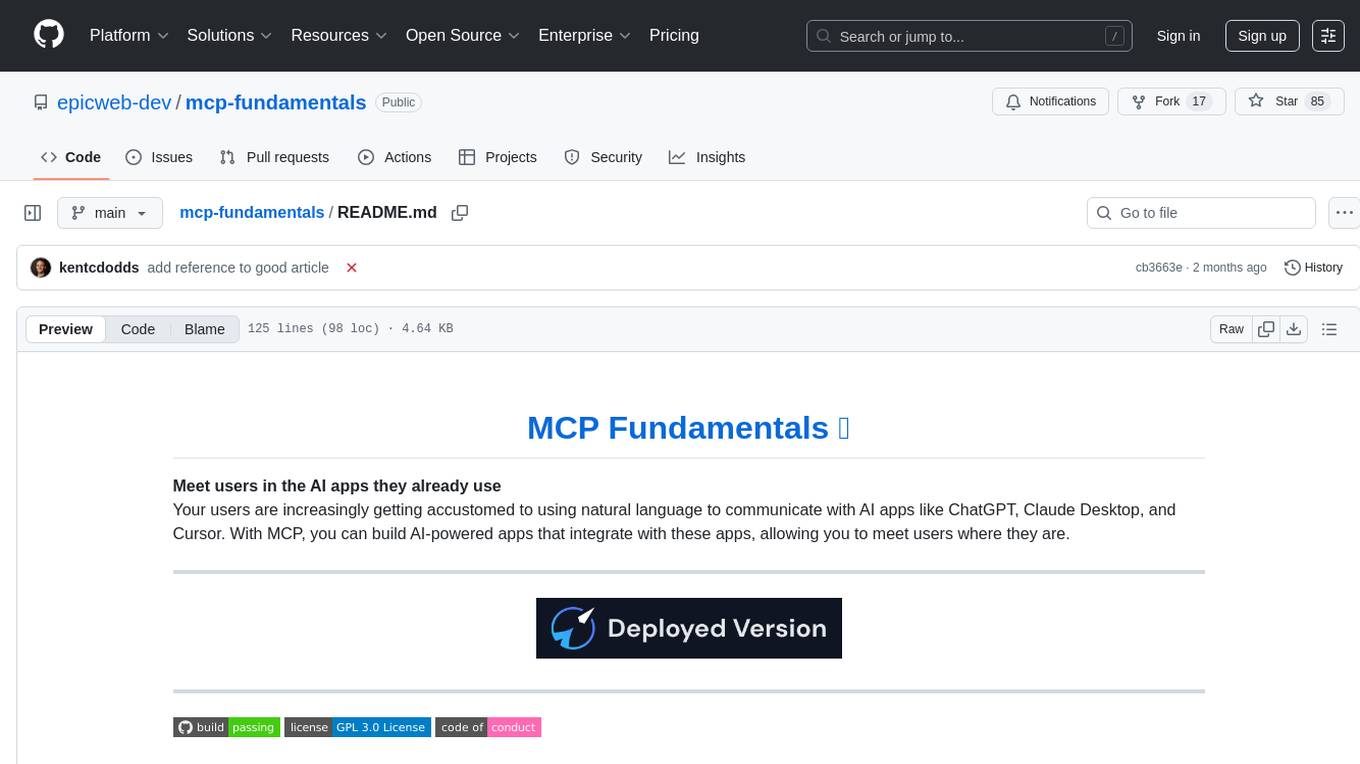
mcp-fundamentals
The mcp-fundamentals repository is a collection of fundamental concepts and examples related to microservices, cloud computing, and DevOps. It covers topics such as containerization, orchestration, CI/CD pipelines, and infrastructure as code. The repository provides hands-on exercises and code samples to help users understand and apply these concepts in real-world scenarios. Whether you are a beginner looking to learn the basics or an experienced professional seeking to refresh your knowledge, mcp-fundamentals has something for everyone.
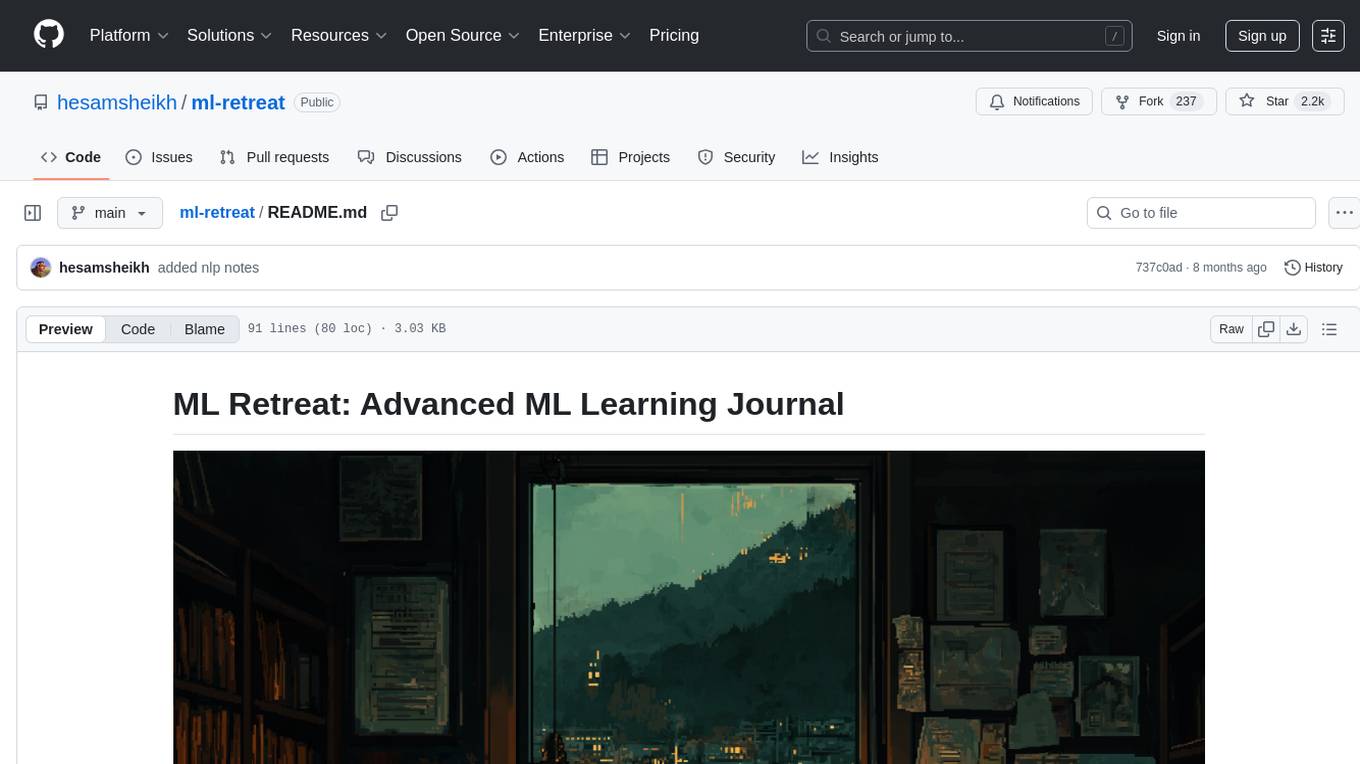
ml-retreat
ML-Retreat is a comprehensive machine learning library designed to simplify and streamline the process of building and deploying machine learning models. It provides a wide range of tools and utilities for data preprocessing, model training, evaluation, and deployment. With ML-Retreat, users can easily experiment with different algorithms, hyperparameters, and feature engineering techniques to optimize their models. The library is built with a focus on scalability, performance, and ease of use, making it suitable for both beginners and experienced machine learning practitioners.
For similar tasks

dora
Dataflow-oriented robotic application (dora-rs) is a framework that makes creation of robotic applications fast and simple. Building a robotic application can be summed up as bringing together hardwares, algorithms, and AI models, and make them communicate with each others. At dora-rs, we try to: make integration of hardware and software easy by supporting Python, C, C++, and also ROS2. make communication low latency by using zero-copy Arrow messages. dora-rs is still experimental and you might experience bugs, but we're working very hard to make it stable as possible.
For similar jobs

sweep
Sweep is an AI junior developer that turns bugs and feature requests into code changes. It automatically handles developer experience improvements like adding type hints and improving test coverage.

teams-ai
The Teams AI Library is a software development kit (SDK) that helps developers create bots that can interact with Teams and Microsoft 365 applications. It is built on top of the Bot Framework SDK and simplifies the process of developing bots that interact with Teams' artificial intelligence capabilities. The SDK is available for JavaScript/TypeScript, .NET, and Python.

ai-guide
This guide is dedicated to Large Language Models (LLMs) that you can run on your home computer. It assumes your PC is a lower-end, non-gaming setup.

classifai
Supercharge WordPress Content Workflows and Engagement with Artificial Intelligence. Tap into leading cloud-based services like OpenAI, Microsoft Azure AI, Google Gemini and IBM Watson to augment your WordPress-powered websites. Publish content faster while improving SEO performance and increasing audience engagement. ClassifAI integrates Artificial Intelligence and Machine Learning technologies to lighten your workload and eliminate tedious tasks, giving you more time to create original content that matters.

chatbot-ui
Chatbot UI is an open-source AI chat app that allows users to create and deploy their own AI chatbots. It is easy to use and can be customized to fit any need. Chatbot UI is perfect for businesses, developers, and anyone who wants to create a chatbot.

BricksLLM
BricksLLM is a cloud native AI gateway written in Go. Currently, it provides native support for OpenAI, Anthropic, Azure OpenAI and vLLM. BricksLLM aims to provide enterprise level infrastructure that can power any LLM production use cases. Here are some use cases for BricksLLM: * Set LLM usage limits for users on different pricing tiers * Track LLM usage on a per user and per organization basis * Block or redact requests containing PIIs * Improve LLM reliability with failovers, retries and caching * Distribute API keys with rate limits and cost limits for internal development/production use cases * Distribute API keys with rate limits and cost limits for students

uAgents
uAgents is a Python library developed by Fetch.ai that allows for the creation of autonomous AI agents. These agents can perform various tasks on a schedule or take action on various events. uAgents are easy to create and manage, and they are connected to a fast-growing network of other uAgents. They are also secure, with cryptographically secured messages and wallets.

griptape
Griptape is a modular Python framework for building AI-powered applications that securely connect to your enterprise data and APIs. It offers developers the ability to maintain control and flexibility at every step. Griptape's core components include Structures (Agents, Pipelines, and Workflows), Tasks, Tools, Memory (Conversation Memory, Task Memory, and Meta Memory), Drivers (Prompt and Embedding Drivers, Vector Store Drivers, Image Generation Drivers, Image Query Drivers, SQL Drivers, Web Scraper Drivers, and Conversation Memory Drivers), Engines (Query Engines, Extraction Engines, Summary Engines, Image Generation Engines, and Image Query Engines), and additional components (Rulesets, Loaders, Artifacts, Chunkers, and Tokenizers). Griptape enables developers to create AI-powered applications with ease and efficiency.


